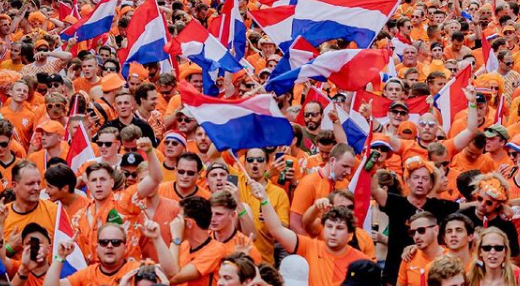Why Is The National Orange?
Orange is a peculiar color, yet it is the national color of The Netherlands. It is the color that the Dutch national teams wear, and it is the color of the House of Orange-Nassau. But why is it the national color of The Netherlands? The answer to that question dates back to the 16th century when The Netherlands was fighting for its independence from Spain.
William of Orange
William of Orange, the founding father of The Netherlands, was born William of Nassau-Dillenburg in 1533 in Germany. He inherited the Principality of Orange, located in the south of France, and became the Prince of Orange in 1544. In those days, the Principality of Orange was still an independent county state in the Provence in the south of France.
The title Prince of Orange made William a sovereign and, at least in his own eyes, equal to the King of Spain, who then ruled over the Netherlands. William of Orange was the leader of the rebellion against Spain and is considered the Founding Father of The Netherlands. The war of independence against Spain lasted for 80 years (1568-1648), and William of Orange was the commander of the Dutch army until he was murdered in Delft in 1584.

William of Orange was one of the few who embraced the idea of a common nation and greatly advocated religious tolerance. He was thus far ahead of his time and an essential unifying factor in the early years of The Republic of the Seven Provinces. Only after his death did his son Maurice of Orange and Johan van Oldenbarneveld receive sufficient executive power to make the ideals of William of Orange a reality.
A descendant of William of Orange, William III of Orange, was the first and only Dutchman who became King of England in 1689. As an aside, William III of Orange is the reason there is orange in the Irish flag to symbolize the protestants supporting him.
Orange symbolizes national unity, and the Dutch signify national pride by wearing orange. Orange refers to the family name of the Dutch Royal Family, the House of Orange-Nassau. The reason that The Netherlands is orange goes back to William of Orange, the founding father of The Netherlands in the 16th century.
Flag
But why is the Dutch flag not orange or at least partly orange? Orange used to be part of the Dutch flag in the early years of the Netherlands when the Dutch flag was orange, white, and blue. Red replacing orange in The Dutch flag was a sign of the political dissociation between the House of Orange and the new Dutch Republic.
The first use of orange as a symbol of The Netherlands dates back to 1572 when the Dutch troops conquered the city of Den Briel in the war against Spain. The inspiration for these colors came from the uniforms of William’s of Orange army wearing uniforms with these colors. However, orange did not remain part of the Dutch flag for long and was changed to red between 1630-1660.
There are three explanations for why orange was replaced by red in the Dutch national flag between 1630 and 1660. The first explanation for the change from orange to red in the Dutch flag is that the orange is less visible at sea. At that time, the Netherlands depended hugely on business overseas for its economic survival. This may have been a convincing argument in those days. A second explanation for the change from orange to red in the Dutch flag is that orange was too difficult to make. The color red was easier and cheaper to produce.
To make the color orange, you need rare raw materials. These scarce materials were so rare and expensive that red became a good alternative. The declining political influence of the House of Orange in the new Dutch Republic caused the replacement of orange by red in the Dutch flag.
Orange fans!
Dutch football supporters wear orange shirts to show their support for the national team and to unite the Dutch behind their country. This tradition is known as "Orange Fever" and has reached great heights, especially during the 2010 and 2014 football World Championships when the Dutch national team reached the final and semi-final respectively. The Dutch national anthem, Wilhelmus, is also named after William of Orange, highlighting the enormous influence he had on the Netherlands. If you want to join in with the tradition, make sure to wear the right kind of orange, with the hexadecimal color code of Dutch orange being #FF9B00. It is essential to keep the color orange as a national symbol, and wearing it on special days will help you feel united with the Dutch.
